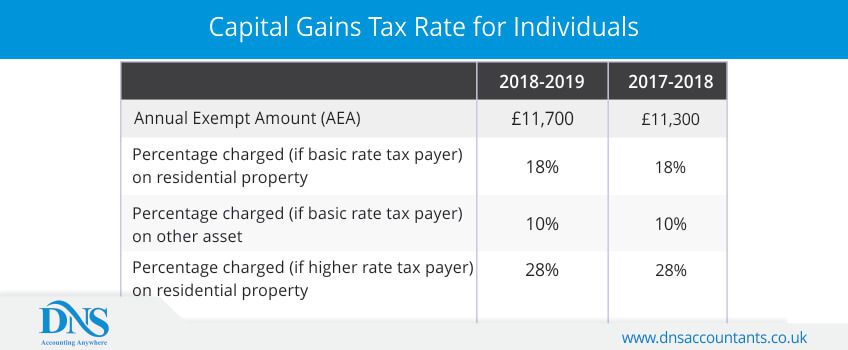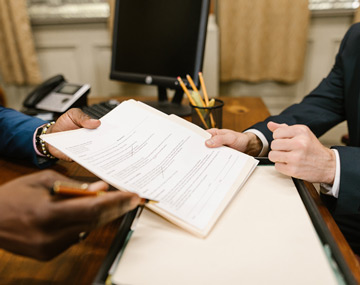Capital Gains Tax Calculator – How to calculate?
To calculate Capital Gains Tax (CGT) on selling of an asset, you must be aware of the “type of the asset”, net profit from selling of the asset, are you selling it as an individual or as trustee and Annual Exempt Amount (AEA) for that particular year.
You can calculate the tax you have to pay by using our Capital Gains Tax calculator (CGT).
Capital Gains Tax Calculator – How to calculate?
This calculator is only for reference purpose and provides an estimate. But if you wish to get an accurate result,
please consult with an
expert accountant
How to use Capital Gains Tax (CGT) calculator?
- Select if you have sold your asset as an individual or as a trustee.
- Select the tax period – you can select either 2017/18 or 2018/19.
- Select “residential property” if the asset that you have sold is your residence or select “other asset” if the asset you have sold/disposed is property, shares, business assets or personal possession.
- Fill up the amount of selling and acquiring the asset for which you need to calculate the tax.
- Total allowable losses – If you have suffered losses on any asset, then you can use that loss to reduce the amount of gain on selling/disposing of your asset. You can also include losses from your previous years (if any). If you do not have any losses to show put the amount as zero in this section.
- On the basis of the information you have provide, we will calculate the Capital Gain, Annual Exempt Amount (AEA) and your Personal Allowance for that year.
- Now fill in your annual income from all sources (without deducting any tax). This annual is income is important especially if you are an individual. On the basis of your income, you will be charged a percentage (10% or 18% if you are a basic rate tax payer; 20% or 28% if you are higher rate tax payer)
- Hit the calculate button and see how much of tax you owe to the HMRC.
Note – This calculator should be used as a reference only. There are certain conditions that we have not included which might lower your tax further. For example if you are an entrepreneur, then you are eligible for Entrepreneurs relief, where the percentage you have to pay is 10%. Or if you are selling your own home, then you are eligible for Private Residence Relief. It is always advisable to seek an expert accountant before finalizing on your taxes.
If you are an individual, you need to keep in mind the rates given in the table below to know how your taxes are being calculated.

| Capital Gain Tax Rate for Individuals | 2018-2019 | 2017-2018 |
|---|---|---|
| Annual Exempt Amount (AEA) | £ 11,700 | £ 11,300 |
| Percentage charged (if basic rate tax payer) on residential property | 18% | 18% |
| Percentage charged (if basic rate tax payer) on other asset | 10% | 10% |
| Percentage charged (if higher rate tax payer) on residential property | 28% | 28% |
| Percentage charged (if higher rate tax payer) on other asset | 20% | 20% |
| Basic Rate tax payer | £0 to £ 34,500 | £0 to £ 33,500 |
| Higher Rate tax payer | Above £ 34,500 | Above £ 33,500 |
For trustees, capital gain tax is calculated in a different way. Use the below exempts and percentages on gains if you are a trustee.

| Capital Gain Tax Rate for trustees | 2018-2019 | 2017-2018 |
|---|---|---|
| Annual Exempt Amount (AEA) | £5850 | £5650 |
| Entrepreneurs relief | 10% | 10% |
| Percentage charged on residential property | 28% | 28% |
| Percentage charged on other assets | 20% | 20% |
Example of how Capital Gain Tax is calculated if you are an individual-
Your annual income is £40,000 and the allowances you get for the year 2017/18 is personal allowance and blind persons allowance. You disposed of all your assets in your business (refinery machines, computers, office space) and the total amount is £70,000. The initial cost of purchasing all the assets was £56,000. Then the total CGT you have to pay would be based on the calculations given below –
| Taxable Income | = Annual Income – (Personal Allowance + Blind Person’s Allowance){you can add any other relief you might have} |
|---|---|
| = £40,000 – (£11,500 + £2320) | |
| = £26,180 |
| Taxable Gains |
= Selling price of asset – Cost of asset purchased |
|---|---|
| = £70,000 – £56,000 | |
| = £14,000 |
Now deduct the Annual Exempt Amount from the taxable gains on which tax is to be calculated.
= £14,000 – £11,300
= £2,700
Now add this amount to your taxable income to arrive at what tax percentage would you be paying.
= £26,180 + £2,700
= £28,880
The amount £28,880 falls in the basic rate tax payer (£0 to £ 33,500), so the tax percentage would be 10% on £2,700.
Capital Gains Tax = 10% of £2,700
Capital Gains Tax = £270.
Also Read : Capital Gains Tax Non Residents
Also Read : Capital Gains Tax – How to Avoid Paying Tax on Property
Also Read : Tax Relief On Capital Gains For Foreign Investors Investing in India
Also Read : Capital Gains Tax on gold and silver investments in UK
Any questions? Schedule a call with one of our experts.







